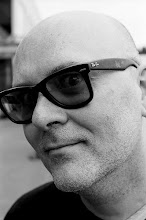A compromise was finally worked out. The NSA was not compelled to go to the secret FISA court to get warrants, but Justice imposed tougher legal standards before permitting eavesdropping on communications into the United States. It was a victory for the Justice lawyers, and it drove Addington to new levels of vexation with Goldsmith.The NY Times reports today that some administration officials are putting pressure on Dr. James Hansen, NASA's chief climatologist, to not speak about his personal views on global warming. They also report that other scientists are facing similar pressures.Addington is a hard man to cross. Flanigan, his former White House colleague, described his M.O.: "David could go from zero to 150 very quickly. I'm not sure how much is temper and how much is for effect. At a meeting with government bureaucrats he might start out very calm. Then he would start with the sarcasm. He could say, 'We could do that, but that would give away all of the president's power.' All of a sudden here comes David Addington out of his chair. I'd think to myself we're not just dancing a minuet, there's a little slam dancing going on here." But Addington "usually had the facts, the law and the precedents on his side," says Flanigan. He had another huge advantage. He never needed to invoke Cheney's name, but everyone knew that he spoke for the vice president.
Hm, with the 4th amendment thwarted and the first one under attack (see above plus White House interference on reporting the 4th Amendment violations by the NY Times), which amendment are they going to go after next?But Dr. Hansen said that nothing in 30 years equaled the push made since early December to keep him from publicly discussing what he says are clear-cut dangers from further delay in curbing carbon dioxide.
In several interviews with The New York Times in recent days, Dr. Hansen said it would be irresponsible not to speak out, particularly because NASA's mission statement includes the phrase "to understand and protect our home planet."
He said he was particularly incensed that the directives had come through telephone conversations and not through formal channels, leaving no significant trails of documents.
Dr. Hansen's supervisor, Franco Einaudi, said there had been no official "order or pressure to say shut Jim up." But Dr. Einaudi added, "That doesn't mean I like this kind of pressure being applied."
The fresh efforts to quiet him, Dr. Hansen said, began in a series of calls after a lecture he gave on Dec. 6 at the annual meeting of the American Geophysical Union in San Francisco. In the talk, he said that significant emission cuts could be achieved with existing technologies, particularly in the case of motor vehicles, and that without leadership by the United States, climate change would eventually leave the earth "a different planet."
The administration's policy is to use voluntary measures to slow, but not reverse, the growth of emissions.
After that speech and the release of data by Dr. Hansen on Dec. 15 showing that 2005 was probably the warmest year in at least a century, officials at the headquarters of the space agency repeatedly phoned public affairs officers, who relayed the warning to Dr. Hansen that there would be "dire consequences" if such statements continued, those officers and Dr. Hansen said in interviews.
Among the restrictions, according to Dr. Hansen and an internal draft memorandum he provided to The Times, was that his supervisors could stand in for him in any news media interviews...
The fight between Dr. Hansen and administration officials echoes other recent disputes. At climate laboratories of the National Oceanic and Atmospheric Administration, for example, many scientists who routinely took calls from reporters five years ago can now do so only if the interview is approved by administration officials in Washington, and then only if a public affairs officer is present or on the phone.
Where scientists' points of view on climate policy align with those of the administration, however, there are few signs of restrictions on extracurricular lectures or writing.
One example is Indur M. Goklany, assistant director of science and technology policy in the policy office of the Interior Department. For years, Dr. Goklany, an electrical engineer by training, has written in papers and books that it may be better not to force cuts in greenhouse gases because the added prosperity from unfettered economic activity would allow countries to exploit benefits of warming and adapt to problems.
In an e-mail exchange on Friday, Dr. Goklany said that in the Clinton administration he was shifted to nonclimate-related work, but added that he had never had to stop his outside writing, as long as he identified the views as his own.
"One reason why I still continue to do the extracurricular stuff," he wrote, "is because one doesn't have to get clearance for what I plan on saying or writing."


No comments:
Post a Comment